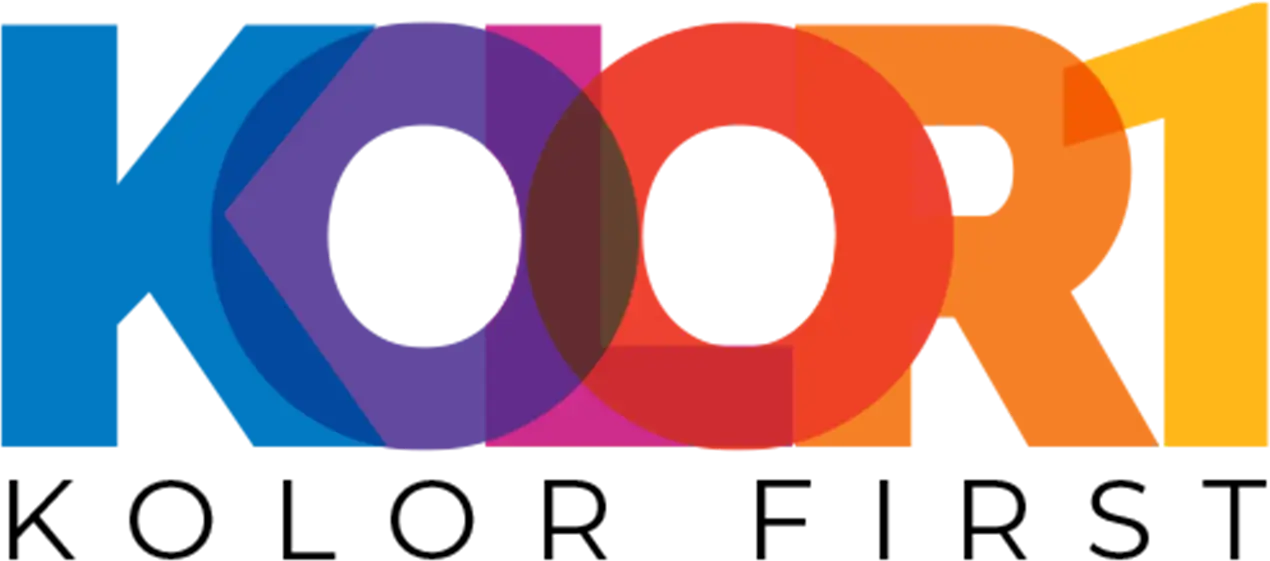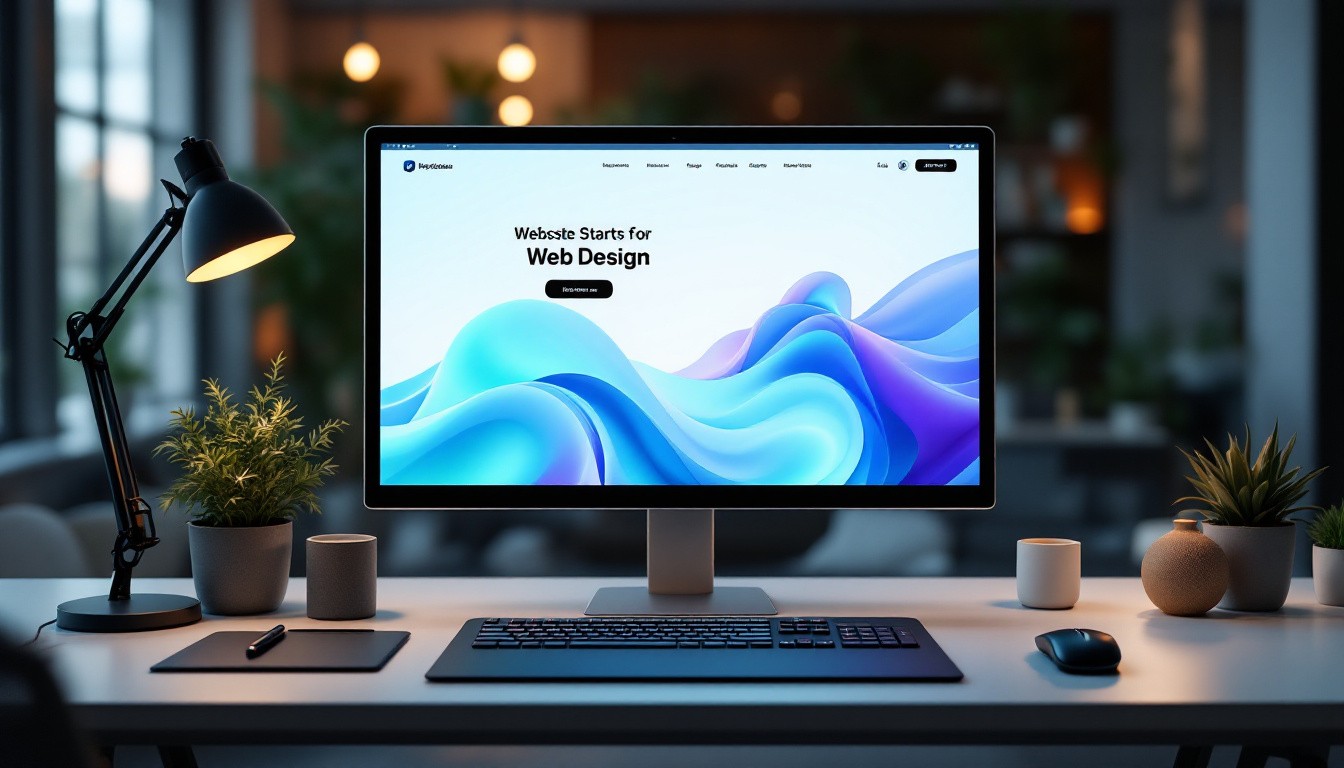Your website is more than just a digital business card. It’s a powerful marketing tool that can attract and convert potential clients.
At Kolorfirst LLC, we’ve seen firsthand how effective marketing web design can transform businesses. This post will guide you through key strategies to make your site a client magnet.
Learn how to craft a user-centric design, optimize for search engines, and boost conversions with proven techniques.
How to Build a Website That Speaks to Your Audience
Know Your Audience Inside Out
A user-centric website design forms the foundation of effective digital marketing. It’s not just about aesthetics; it’s about creating an experience that resonates with your target audience and motivates them to act.
The first step in crafting a user-centric design involves understanding your audience thoroughly. Analyze your audience demographics, behaviors, and preferences. Use tools like Google Analytics to collect data on your current visitors. Conduct surveys or interviews with existing clients to gain insights into their needs and pain points.
For instance, if you target busy professionals, your site should prioritize quick access to information and easy-to-use booking systems. If your audience consists of tech-savvy millennials, focus on interactive elements and social media integration.
Simplify Navigation for Maximum Impact
After understanding your audience, structure your site in a way that makes sense to them. A clear, intuitive navigation structure is essential. Try to create a flat architecture where users can reach any page within three clicks.
Use descriptive labels for your menu items. Instead of generic terms like “Services,” be specific: “Web Design,” “SEO Consulting,” or “Brand Strategy.” This clarity helps users find what they’re looking for quickly and improves your site’s search engine optimization.
Make Your Site Work on Every Device
In 2025, responsive design is no longer optional; it’s a necessity. According to Statista, mobile devices accounted for 64.4% of global web traffic in 2024 (a trend that continues to grow).
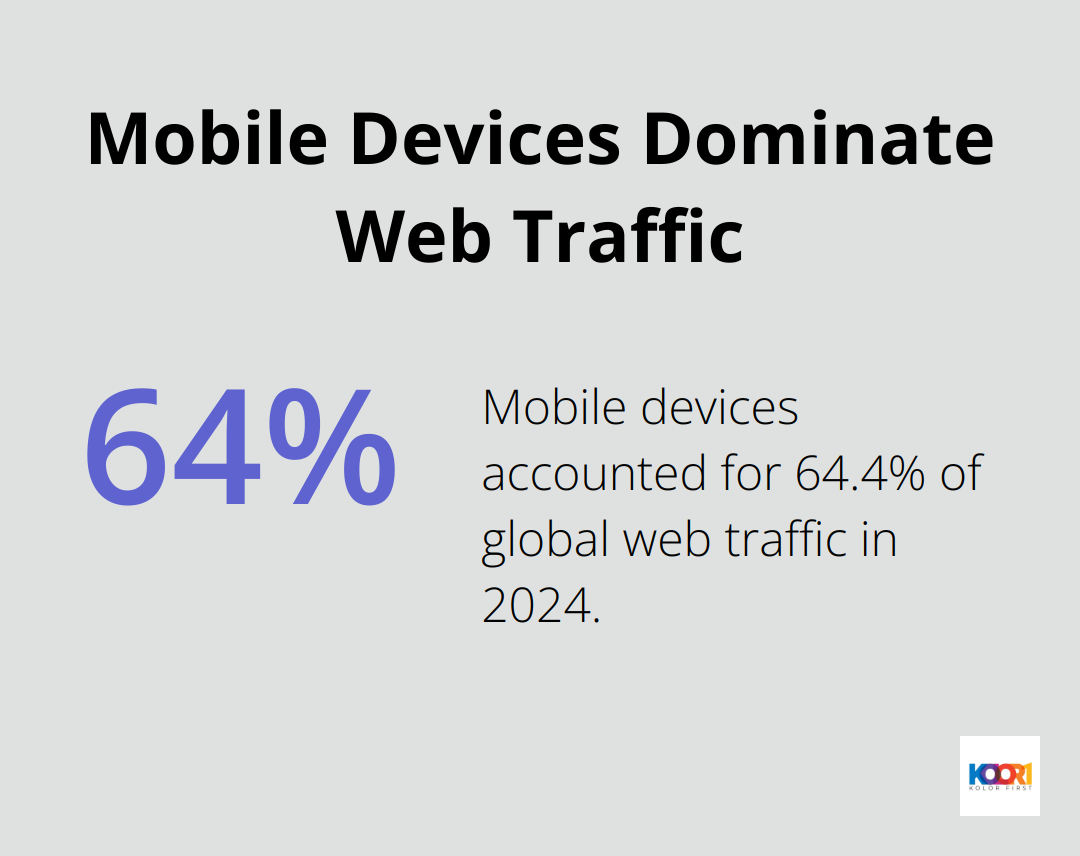
Responsive design ensures your site looks great and functions well on any device, from smartphones to desktops. But it’s not just about shrinking your desktop site. Consider how users interact with your site on different devices. On mobile, for instance, you might prioritize click-to-call buttons and streamlined forms.
Test and Refine Continuously
A user-centric website requires ongoing analysis and refinement based on user feedback and behavior. Popular testing methods include A/B testing, longitudinal testing, and champion/challenger testing. Use heat mapping tools to understand how users navigate your site and where they spend the most time.
Pay attention to your site’s loading speed (a critical factor in user experience and search engine rankings). Optimize images, minimize code, and leverage browser caching to improve load times across all devices.
As we move towards the next crucial aspect of marketing web design, remember that a well-crafted, user-centric website lays the groundwork for effective search engine optimization. Let’s explore how to optimize your site for search engines and increase your visibility to potential clients.
How to Boost Your Site’s Search Visibility
Uncover the Right Keywords
Search engine optimization (SEO) transforms websites into client magnets. The first step involves identifying terms potential clients use when searching for your services. Google Keyword Planner offers insights into search volumes and competition levels. Get your ads to the right customers with Google Ad’s Keyword Planner. Discover how to do keyword research and get keyword suggestions for your campaign.
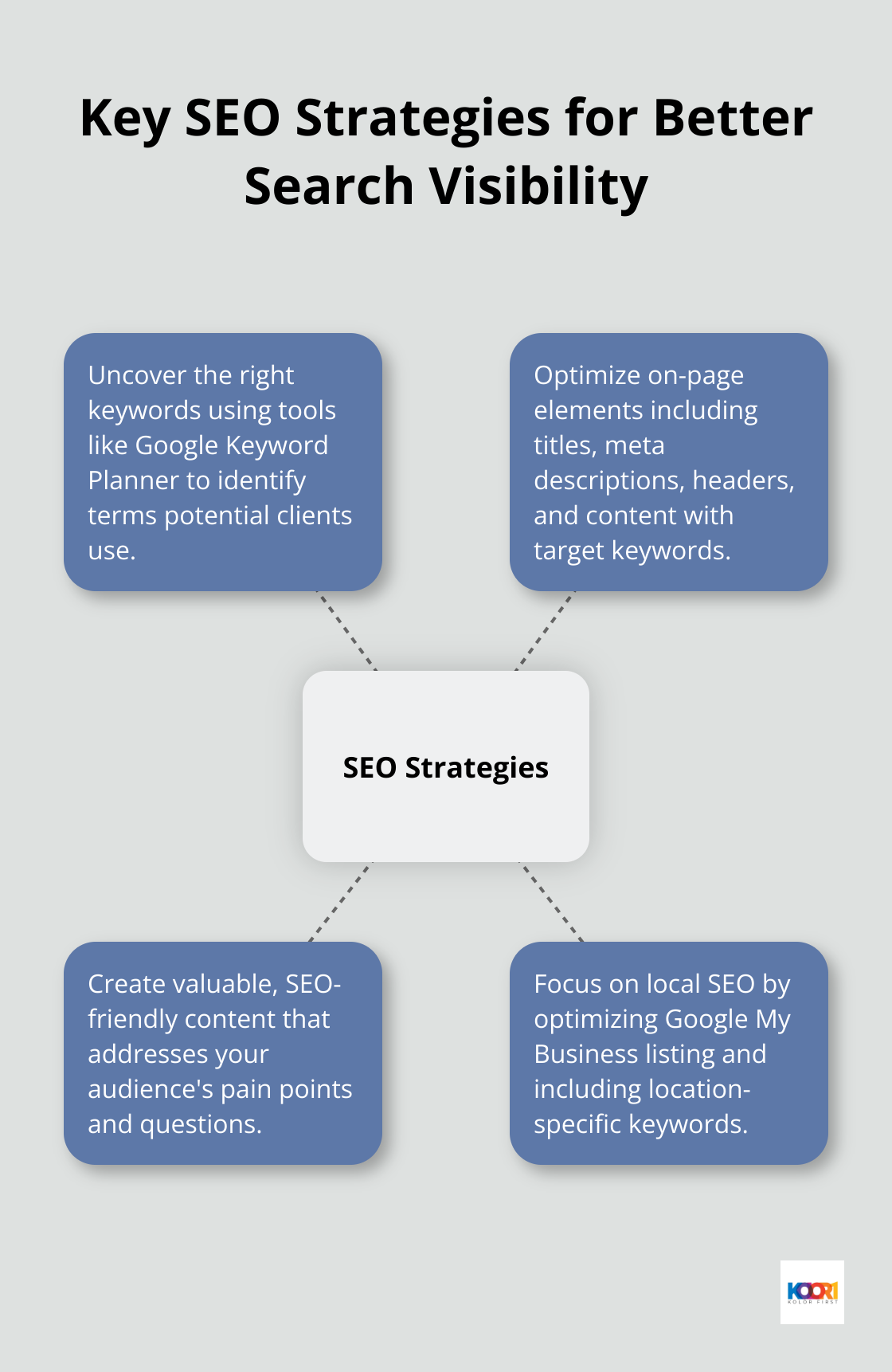
Optimize Your On-Page Elements
After identifying target keywords, incorporate them strategically into your website’s key elements. This includes page titles, meta descriptions, headers, and content. Avoid keyword stuffing (a practice penalized by search engines). Instead, create natural, readable content that provides value to your visitors.
Optimize images by compressing them for faster load times and using descriptive alt text. This improves user experience and helps search engines understand your visual content.
Create Valuable, SEO-Friendly Content
Content reigns supreme in SEO. Publish high-quality, informative content that addresses your audience’s pain points and questions regularly. This could include blog posts, case studies, or how-to guides related to your services.
Structure your content for readability. Use headers (H2, H3, etc.) to break up your text and make it easier for both users and search engines to understand your content hierarchy.
Incorporate internal linking within your content. This helps search engines understand the relationship between different pages on your site and can improve your overall site structure.
Focus on Local SEO
Don’t overlook local SEO if you serve a specific geographic area. Optimize your Google My Business listing, encourage customer reviews, and include location-specific keywords in your content. This guide will walk you through some of the most common and effective improvements you can do on your site.
These SEO strategies will improve your website’s visibility in search results, attracting more potential clients to your site. However, getting visitors to your site is just the first step. The next challenge lies in converting these visitors into leads and clients through effective conversion rate optimization techniques.
How to Turn Website Visitors into Clients
Craft Irresistible Calls-to-Action
Your calls-to-action (CTAs) guide visitors towards becoming clients. Make them visually striking and use action-oriented language. Replace generic phrases like “Submit” or “Click Here” with specific, benefit-driven CTAs such as “Get Your Free SEO Audit” or “Start Your Web Design Project.”
A HubSpot study revealed that personalized CTAs convert 202% better than default versions. Tailor your CTAs based on user behavior, demographics, or their position in the buyer’s journey. A first-time visitor might see a CTA for a free guide, while a returning visitor could receive a prompt to book a consultation.
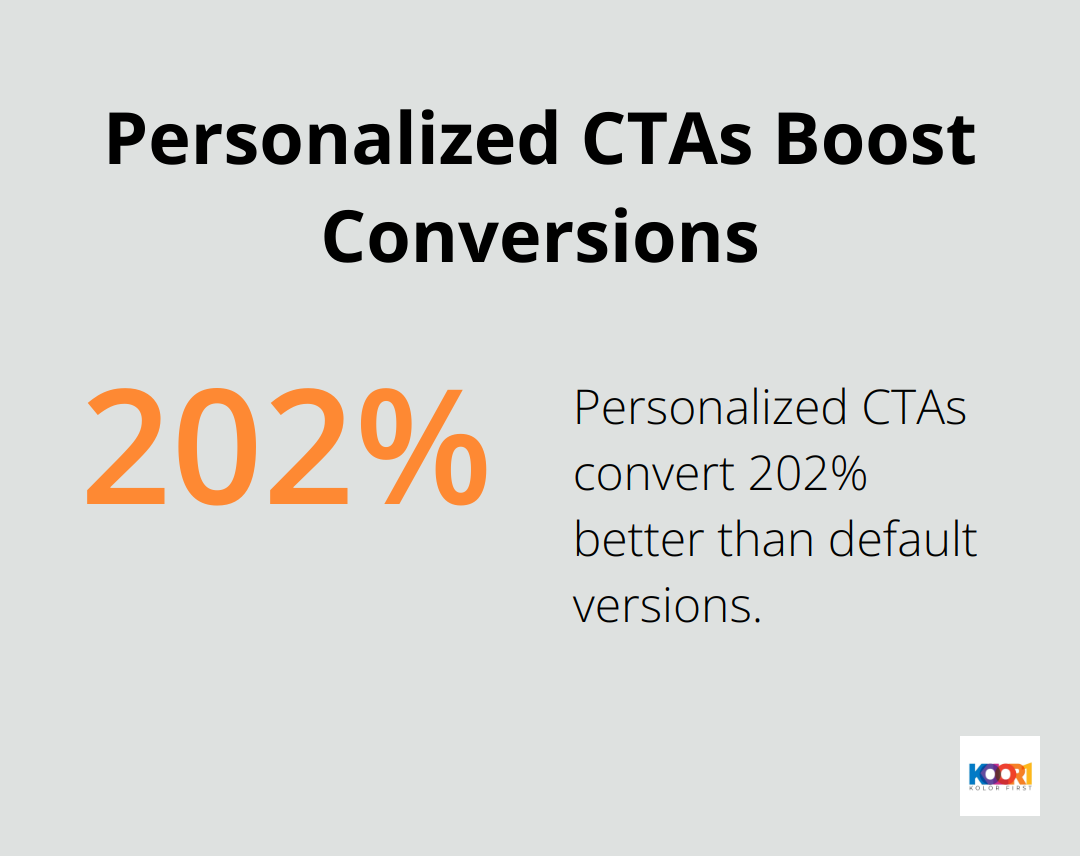
Place Lead Capture Forms Strategically
Lead capture forms collect visitor information. Their effectiveness depends on design and placement. Keep forms concise – MarketingSherpa reports that reducing form fields from 11 to 4 can increase conversions by 120%.
Position your forms strategically. For high-intent pages (like service or pricing pages), try exit-intent popups that appear when a user prepares to leave. These can capture leads you might otherwise lose. On blog posts or resource pages, in-line forms or slide-in boxes can prove effective without disrupting the reading experience.
Leverage the Power of Social Proof
Social proof significantly boosts conversions. According to BrightLocal, 87% of consumers read online reviews for local businesses in 2020. Display client testimonials, case studies, and industry awards prominently on your site.
Video testimonials can be even more compelling than text. A Wyzowl study found that 2 out of 3 people say they’d more likely make a purchase after watching a testimonial video demonstrating how a business, product or service helped another person like them.
Implement Conversion Rate Optimization Techniques
Conversion Rate Optimization (CRO) maximizes the return on your marketing efforts. Analyze your conversion data regularly, conduct A/B tests, and refine your strategies based on the results. Tools like Google Optimize or Optimizely can help you run these tests effectively.
Try different layouts, color schemes, and copy variations to see what resonates best with your audience. (Small changes can often lead to significant improvements in conversion rates.)
Personalize the User Experience
Personalization can dramatically improve conversion rates. Use data from user behavior, past purchases, or demographic information to tailor the website experience for each visitor. This could include personalized product recommendations, custom landing pages, or targeted content.
(Companies that excel at personalization generate 40% more revenue from those activities than average players, according to McKinsey.)
Final Thoughts
Marketing web design transforms websites into powerful client-attracting tools. User-centric design, search engine optimization, and conversion rate optimization work together to create a digital powerhouse. Continuous improvement through data analysis and A/B testing keeps your site fresh and effective in the ever-evolving digital landscape.
We at KolorFirst LLC specialize in creating marketing-focused websites that drive results. Our team combines creative branding, digital marketing expertise, and UX consulting to craft unique online experiences. We build digital assets that elevate your brand and fuel your business growth.
KolorFirst LLC has the skills and experience to help you succeed in your online presence. We can revamp your existing site or create a new one from scratch. Let us help you harness the full potential of marketing web design and boost your online presence.

